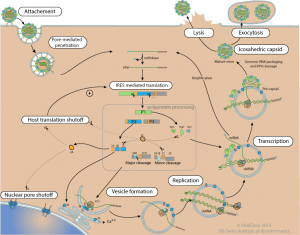Post-polio syndrome (PPS) is a condition that affects polio survivors, often manifesting decades after the initial infection. A recent study published in the European Journal of Physical and Rehabilitation Medicine investigated whether PPS is linked to dysimmune mechanisms. The study compared immune markers between PPS patients and healthy individuals but found no evidence of immune abnormalities in PPS patients. This finding strongly suggests that PPS is not driven by immune dysfunction but rather reflects a neuromuscular degeneration process associated with aging.
Further reading: Poliomyelitis
The researchers analyzed key immune markers, including cytokines and autoantibodies, to determine if any immune abnormalities were present in patients with PPS. Their findings showed no significant differences between the PPS group and healthy controls. The absence of elevated immune markers contradicts previous hypotheses that PPS might have an autoimmune or inflammatory basis, shifting the focus away from immunomodulatory treatments for PPS patients.
Instead, the study suggests that the symptoms of PPS may be caused by the long-term wear and tear of the neuromuscular system, which had already been compromised by the original poliovirus infection. The gradual loss of motor neurons in polio survivors may account for the progressive weakness and fatigue seen in PPS patients.
These findings have critical implications for treatment strategies. Immunotherapy, which has been suggested in the past due to the theory that PPS was an autoimmune condition, is unlikely to benefit patients. Instead, management strategies should emphasize rehabilitation, physical therapy, and maintaining mobility to address muscle weakness and fatigue.
PPS remains a significant challenge for polio survivors, affecting their quality of life. This study highlights the importance of distinguishing between conditions with an immune basis and those driven by degenerative changes, ensuring that appropriate therapies are pursued.
Journal Article: Wolbert, Jonathan G, et al. “Poliomyelitis.” Nih.gov, StatPearls Publishing.
Summary by Faith Oluwamakinde











